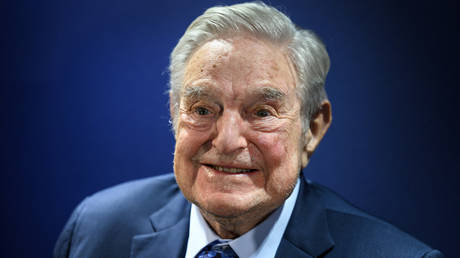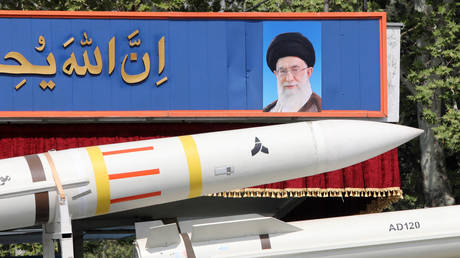The Nazi Plans for a United Europe, by Guillaume Durocher
Europe is a continent of such heterogeneity – whether in terms of states, languages, nationalities, or geography – that no one has ever really succeeded in organizing it into a coherent geopolitical whole. This is despite the demand among statesmen, businesses, and even many simple inhabitants for a peaceful and rationalized European space.
The nineteenth century saw several attempts in this direction with Napoleon’s Continental System, the German Confederation’s gradual construction of a customs union and monetary system for the German principalities, and the little-known Latin Monetary Union. Since 1945, we have of course seen the emergence of the European Union, with its common currency and customs union, as a serious economic power.
The Third Reich faced similar issues. In May 1940, hot on the heels of Hitler’s conquest of France, there were many different opinions among the Germans as to what they should do with their newfound hegemony in Western Europe. Werner Daitz, an associate of National-Socialist ideologue Alfred Rosenberg and an official in the NSDAP’s foreign policy office, wrote a memorandum advocating for the creation of a Reich Commission charged with the economic unification of Europe:
The present [British] blockade, in particular, has rendered unavoidable the construction of a continental European Greater Economic Space [Grossraumwirtschaft] under German leadership as a measure of economic self-defense on the part of the European mainland. The reorganization of the European continent, this eternal core of the white race, will thereby secure the economic recovery and independence which are essential. This economic cooperation must follow the motto: Europe for the Europeans. . . .
If we wish to secure the economic leadership of the European continent which is absolutely necessary in order to strengthen the economy of the European continent as the core area of the white race, and which will in fact do so, then for understandable reasons we must not publicly proclaim it as a German Greater Economic Space. As a matter of principle, we must always speak of Europe, for German leadership of it will emerge naturally from the political, economic, culture, and technological weight of Germany and from its geographical position.
Besides the racial rationale, one finds much the same arguments that today’s Eurocrats and German officials might make. Indeed, while the Second World War was basically fought to prevent Hitlerian/German hegemony in Europe, Germany’s size and natural gifts have led her to a kind of soft hegemony within the European Union: strip-mining Eastern and Southern Europe of their human capital through brain-drain, securing these as captive markets and low-wage outsourcing destinations, and developing the Eurozone monetary union according to her needs.
Typical infographic in Signal – the Third Reich’s foreign-audience picture magazine – showing a map of Europe superimposed with major areas of warfare throughout successive centuries. The authors argued that German supremacy heralded a new era of peace for the traditionally war-torn continent.
Indeed, “European unity” and “freedom” from British, American, and Bolshevik imperialism were recurring themes in German wartime propaganda. In France, “collaboration” with the Germans – whether economic or military – was often justified in the name of “Europe,” notably for those French who volunteered to fight on the Eastern Front.
The Germans never had a clear concept of what they wanted Europe to look like after the war however. For the most part, any would-be “European policy” was reduced to immediate military necessity: namely the need to economically exploit the occupied areas and, where applicable, to recruit soldiers for the war effort.
Hitler’s broad agenda can be outlined as follows: Europe’s final condition would be determined at the end of the war, presumably with the declaration of a Greater-Germanic Reich and the formal annexation of occupied Germanic nations (Denmark, Norway, the Netherlands, Belgium), opening up a long period development and ethnic warfare against the Slavs in the East. France and Russia would never be allowed to recover and again threaten Germany. Thus Hitler’s threefold objectives would be achieved: the scattered German people would be united and their security guaranteed, the threat of Bolshevism would be annihilated, and a great autarkic Germanic empire would be founded, able to contest the United States of America’s emerging global hegemony. The details would sort themselves out in due course.
The difficulties of the war in some ways tended to improve Germany’s European policy, making it more realistic and conciliatory, particularly after Stalingrad. This is evident for instance in the loosening of criteria for joining the Waffen-SS, being extended to most European nationalities, and even to racially-questionable Tartars and Muslim Bosniaks. Propaganda Minister Joseph Goebbels issued directives around this time forbidding German media from making disparaging comments about other European nationalities.
In March 1943, Foreign Minister Joachim von Ribbentrop proposed the creation of a “European Confederation” including virtually all European states. The draft declaration states:
2. The members of the Confederation are sovereign states and guarantee one another’s freedom and political independence. . . .
4. The states of the Confederation will conclude an alliance for the defense of Europe, the plans for which will be drawn up in due course.
5. The European economy will be organized by the member states on the basis of a uniform plan arrived at by mutual agreement. Customs barriers among them will be progressively abolished.
The possible members of the Confederation would initially include “Germany, Italy, France, Denmark, Norway, Finland, Slovakia, Hungary, Romania, Bulgaria, Croatia, Serbia, Greece, and Spain (? [sic]). To those would be added any states in the occupied territories which the Führer might wish to grant independence.” Curiously, the Netherlands and Belgium go unmentioned, which perhaps makes sense given that these were unspoken candidates for annexation to the “Greater-Germanic Reich,” but then again so were Denmark and Norway.
In practice, the point of the proposal was that Germany would be committed to not unilaterally annex participating countries after the war, thus reassuring public opinion in allied and neutral European countries. The vague long-term commitments to economic union and military alliance would, perhaps, eventually be hammered out by committees of diplomats, rather like the postwar European Communities.
Ribbentrop assured the Führer:
If we always appoint the right people as our representatives in these states, people who take a hard line and, despite conciliatory appearances, uncompromisingly follow the concrete political goal, we will not prejudice anything be forming such a confederation. In fact, the formation of the Greater German Reich [sic] at the end of the war will then be a matter of course.
In the event, Hitler was uninterested and unwilling to make such a move in the absence of a major Axis victory (otherwise, the concessions of the Confederation would appear, accurately, to be an admission of weakness).
Notwithstanding Hitler’s quite realistic critique of Coudenhove-Kalergi’s pan-Europe, we can imagine that, even in the case of Axis victory, there would still have been a need for international bureaucrats to patiently work to cobble together something coherent.
Notes
J. Noakes and G. Pridham (eds), Nazism: 1919-1945, vol. 3: Foreign Policy, War, and Racial Extermination (Exeter: University of Exeter Press, 2001), p. 277-78.
Trevor Salmon and Sir William Nicoll (eds.), Building European Union: A Documentary History and Analysis (Manchester: Manchester University Press, 1997), p. 23.
Noakes, Nazism, vol. 3, p. 248.
Ibid., p. 248.
Ibid., p. 247.




